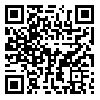Volume 6, Issue 1 (Spring and Summer 2002)
Physiol Pharmacol 2002, 6(1): 27-37 |
Back to browse issues page
Download citation:
BibTeX | RIS | EndNote | Medlars | ProCite | Reference Manager | RefWorks
Send citation to:



BibTeX | RIS | EndNote | Medlars | ProCite | Reference Manager | RefWorks
Send citation to:
Behzadi J, Sheibani V, Esteky H, Ganji F. Effect of locus ceruleus phasic electrical stimulation on responses of barrel cortical cells to controlled mechanical displacement in rats. Physiol Pharmacol 2002; 6 (1) :27-37
URL: http://ppj.phypha.ir/article-1-393-en.html
URL: http://ppj.phypha.ir/article-1-393-en.html
Abstract: (15050 Views)
Behavioral and electrophysiological evidences have shown that locus ceruleus (LC) is involved in different tasks including modulation of sensory processing and shift of attention. In the present study, single unit responses of barrel cortical cells was recorded following controlled mechanical displacement of the principal and peripheral vibrissae in adult rats (100 trials of 200 µm deflection for 10 ms at 1/1.5 second). Mechanical displacement was performed alone and 50 ms after electrical stimulation (10 pulses, 300 µs, 30 µA, 40 Hz) of LC. The onset of evoked responses was defined as the time when spontaneous activity exceeded its mean by two standard deviations. Then, analysis of response latency and response magnitude for periods of 10 and 50 ms following the initiation of evoked response was performed. Response magnitude to principal vibrissae deflection in a period of 10 ms decreased significantly after LC phasic stimulation (p<0.01), but there was no significant difference for a period of 50 ms. In addition, for both time periods, there was no significant differences for response magnitude to peripheral vibrissae deflection before and after LC phasic stimulation. Response latency to principal vibrissae deflection increased significantly after LC stimulation, but it decreased significantly when peripheral vibrissae were deflected (p<0.05). These results support the idea that LC phasic activation has an important role in cortical somatosensory information processing through modulating the receptive field characteristics of cortical neurons.
Type of Manuscript: Experimental research article |
| Rights and permissions | |
 |
This work is licensed under a Creative Commons Attribution-NonCommercial 4.0 International License. |





